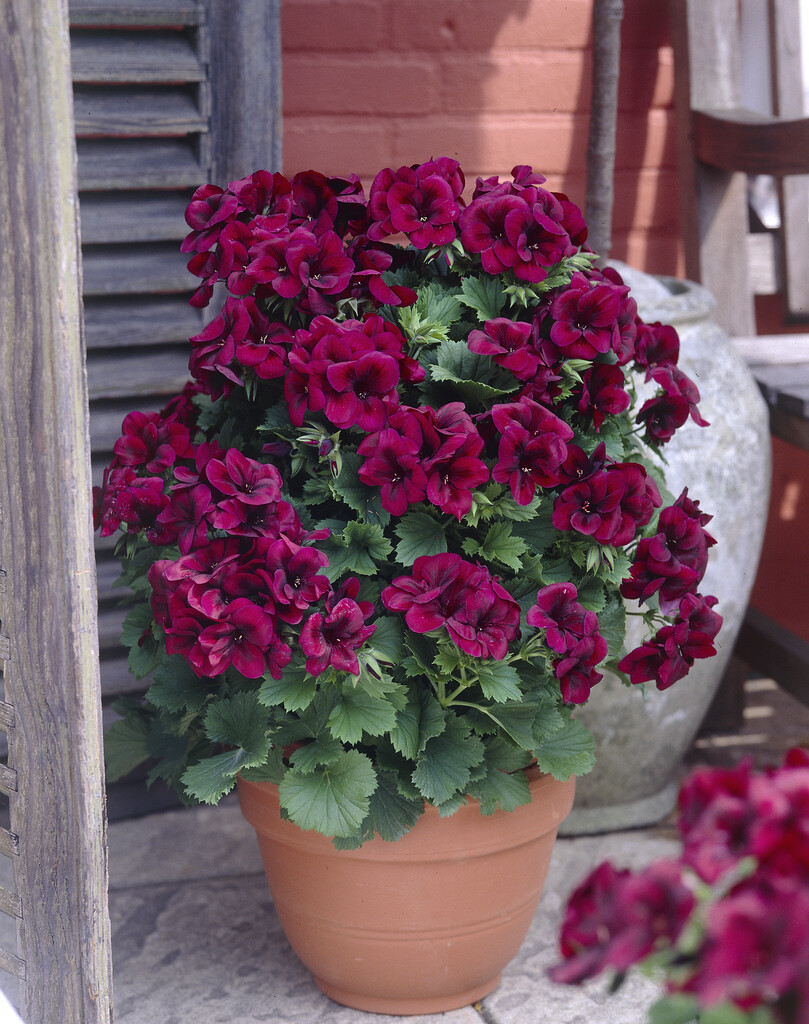Size
Ultimate height
0.1–0.5 metresTime to ultimate height
2–5 yearsUltimate spread
0.1–0.5 metresGrowing conditions
Moisture
Well–drainedpH
Alkaline, NeutralColour & scent
| Stem | Flower | Foliage | Fruit | |
| Spring | Red | Green | ||
|---|---|---|---|---|
| Summer | Red | Green | ||
| Autumn | Green | |||
| Winter | Green |
Position
- Full sun
- Partial shade
Aspect
South–facing or West–facing
Exposure
Sheltered Hardiness
H1CBotanical details
- Family
- Geraniaceae
- Native to GB / Ireland
- No
- Foliage
- Evergreen
- Habit
- Bushy
- Genus
Pelargonium can be perennials, sub-shrubs or shrubs, sometimes succulent and mostly evergreen, with palmately lobed or pinnately divided leaves and clusters of slightly irregular, 5-petalled flowers
- Name status
Accepted
How to grow
Cultivation
May be planted outdoors in beds, baskets and containers after all risk of frost has passed; young plants may need to be hardened off first. Grow in fertile, neutral to alkaline soil in full sun, and overwinter indoors. See pelargonium cultivation for more detailed advice
Propagation
Propagate by softwood cuttings in spring or early autumn
Suggested planting locations and garden types
- City and courtyard gardens
- Cottage and informal garden
- Patio and container plants
- Bedding
- Conservatory and greenhouse
- Flower borders and beds
Pruning
Deadhead regularly
Pests
May be susceptible to vine weevil, glasshouse leafhopper, root mealybugs, aphids, caterpillars, thrips, fungus gnats and glasshouse whitefly
Diseases
May be susceptible to grey moulds, black leg, pelargonium rust and pelargonium viruses
Get involved
The Royal Horticultural Society is the UK’s leading gardening charity. We aim to enrich everyone’s life through plants, and make the UK a greener and more beautiful place.
